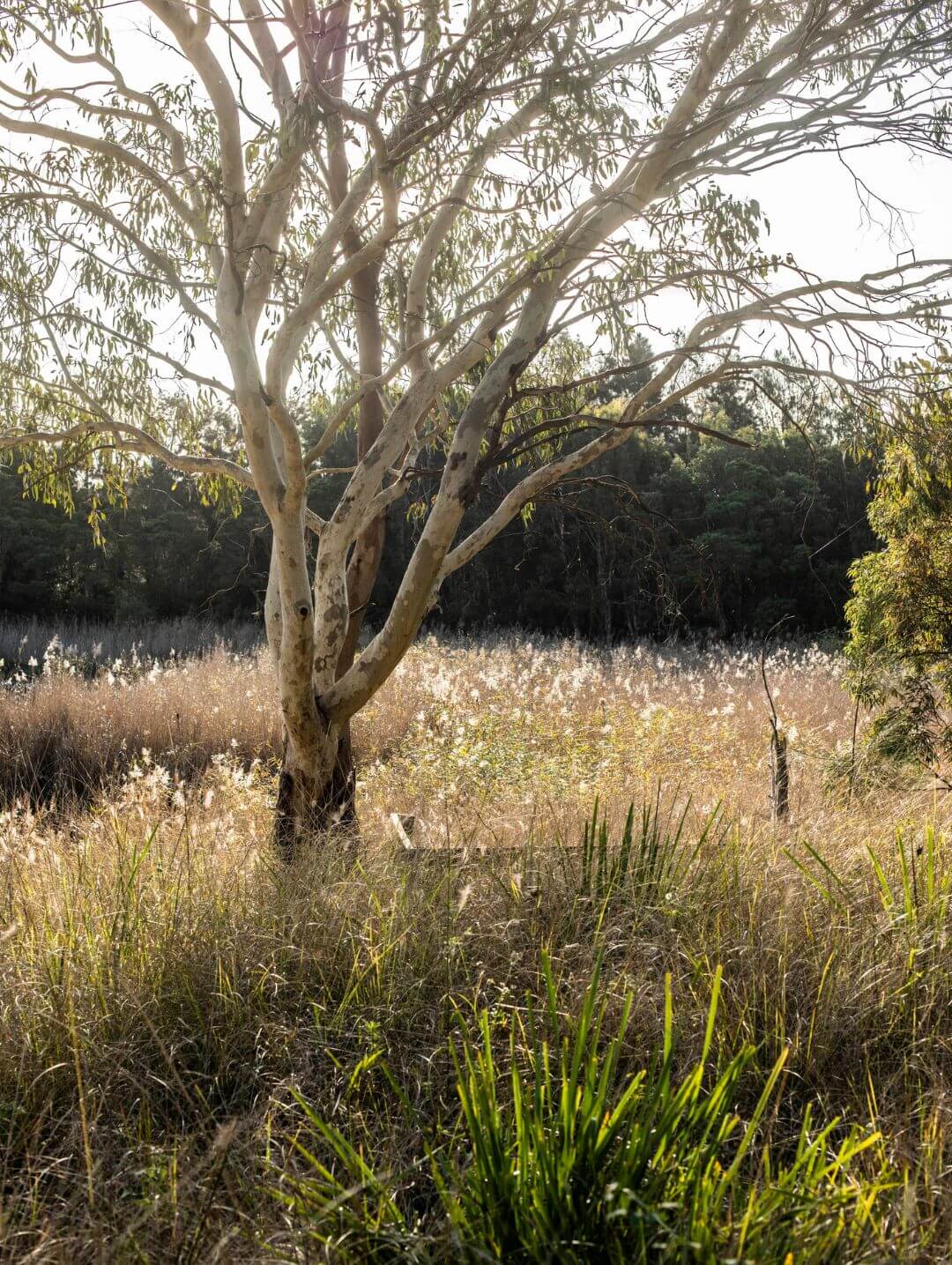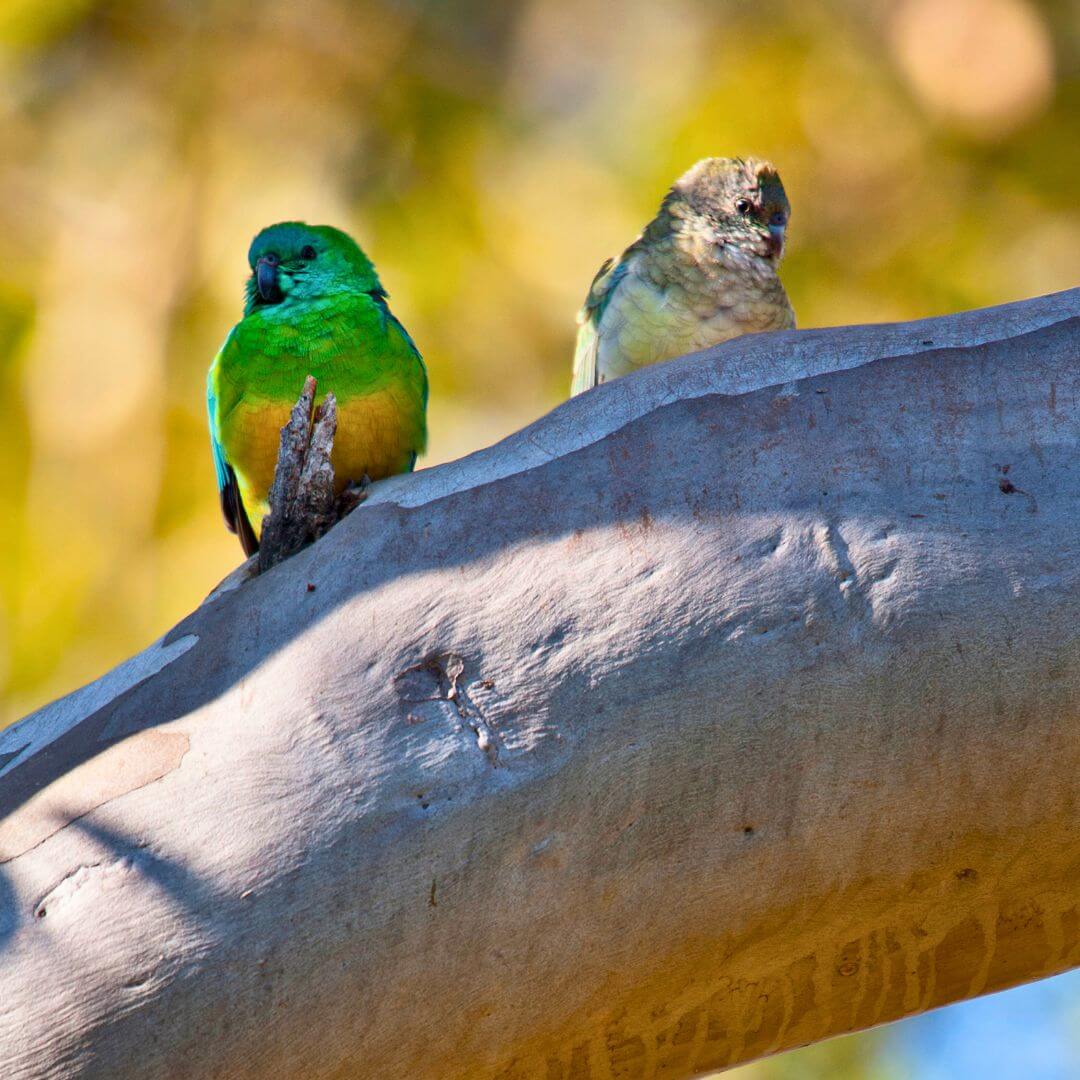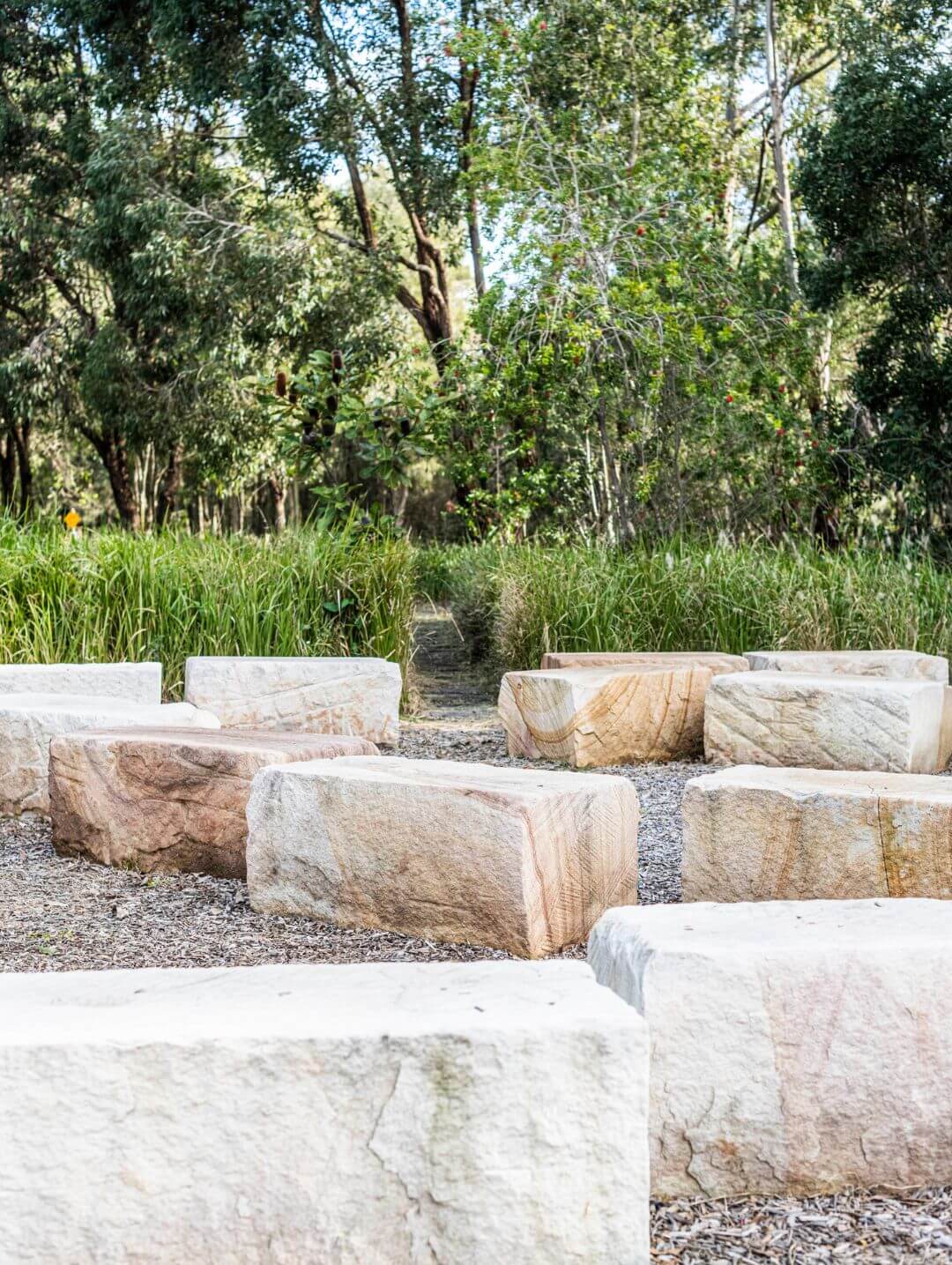Living with wildlife
The Park is home to many creatures great and small, and our community plays an important role in keeping the Park and it's wildlife thriving. Take a look at ways you can help us look after the Park whilst enjoying and making the most of your visits.
Australian bush turkey
Brush-turkeys are a new resident at Sydney Olympic Park with breeding first recorded in the summer of 2020-21.
Male Brush-turkeys build amazing mounds during the breeding season (August to February) which can reach 1m high and 4m wide. Female Brush-turkeys lay eggs in the mounds, and as the mound vegetation decomposes, heat is created to incubate the eggs buried inside. The male is a superb composter, maintaining a constant temperature of 33 - 38°C by digging holes and inserting his beak as a probe. His palate acts as a thermometer and when the mound is too hot, he scrapes leaves off the top, when the mound is too cold he piles the leaves on.
Brush-turkeys face many threats. Only about one Brush-turkey out of every 200 eggs will survive to adulthood due mainly to predation. The incubation period takes approximately 50 days.
Chicks hatch in the mound and burrow their way out by laying on their backs and scraping at soil with their feet. Chicks are independent of their parents as soon as they dig themselves out.
Brush-turkeys play an important role in nature
They can:
- reduce the fuel available for fires by turning over leaf litter and speeding up its decomposition,
- aerate and enrich the soil and
- provide a natural means of free pest control, by feeding on insects, spiders and millipedes.
Australian Brush-turkeys and their mounds/eggs are protected by law, under the NSW Biodiversity Conservation Act 2016.
It is illegal to:
- harm Brush-turkeys,
- damage their habitat, or
- disturb the mound once eggs are laid as this would result in the inhumane death of chicks.
If you see someone harming a mound or a Brush-Turkey contact the Sydney Olympic Park Authority Park Rangers on 0408 864 798 for assistance.
For tips on sharing your garden with a brush turkey, visit: Office of Environment and Heritage.
Dogs in the park
Dogs play an important part in the lives of residents and visitors to the Park and are welcome to enjoy the open spaces and Parklands with their responsible owners. Follow these key points to ensure you are staying considerate of the environment and visitors when visiting the Park with dogs.
Feeding birds
Find out why we recommend avoiding feeding birds in the Park and how doing so helps nature and also the health of our wild bird population.
Birds are clever. Wild birds are like any other living animal (including ourselves): a free feed is totally irresistible. Our Park birds are not starving - their natural food is available in the Park; free food may make life easy but does not necessarily make life good. In the Park, birds are often tossed high calorie foods such as potato chips, sausage or white bread, left-overs from our picnics. These foods are deficient in so many of the nutrients that birds need to be healthy.
Birds are adaptable. Hand-fed birds can become a nuisance, large birds such as Black Swans or Australian White Ibis can become physically aggressive. This is not their fault, but they may be made to pay the penalty of our need to feed. Aggressive individuals may need to be removed or worse.
Birds can be tyrants. Feeding may encourage one species over another, upsetting a natural balance. The species more likely to take food from people are also the species more likely to exclude other, more shy bird species.
Creating a bird-friendly garden is an alternative to direct feeding. This has already been done at Sydney Olympic Park where 435 hectares of parklands provide a wide range of foods in natural habitats. For us at home, a wildlife friendly garden is an excellent way to connect with nature by providing food for birds naturally. Good bird habitat includes providing food, water and shelter. The more variety you can create in your backyard, the more birds you may see in it.
Feeding birds may bring us happiness and pleasure but this benefits us at the expense of wild birds. At Sydney Olympic Park, we encourage people to care for our birds by watching them, understanding them and letting us know when something unusual or interesting happens. Let’s enjoy and protect birds at Sydney Olympic Park.
Information on birdscaping your garden can be found at:
Living with snakes
Sydney Olympic Park is an urban biodiversity hotspot – a place unique for the great variety of life it supports despite being surrounded by urban development. Over 400 species of plants and 250 species of native wildlife have been recorded across 430 hectares of the Park. Snakes are an important and valued part of the Park’s biodiversity.
Snakes play a vital role in many ecosystems, from forests, woodlands, deserts to the ocean! They control the population of animals they feed on, including rats, lizards, frogs, birds and sometimes other snakes. In turn, they are food for other wildlife such as falcons and other birds of prey.
Here at Sydney Olympic Park, we do not see many snakes; populations appear to be very small. Over 20 years, only four local species of snake have been recorded at the Park – these are Red-bellied Black Snake, Eastern Brown Snake, Common Tree Snake, and Blackish Blind Snake. Another two species recorded - the Diamond Python and Carpet Python, were probably released pets as they are not native to the local area.
The most commonly encountered snake (typically reported just once or twice per year) is the Red-bellied Black Snake, which, as its name suggests, is black above and dull red/orange below, and about 1.5-2m in length. This species is shy and will generally freeze or flee from humans.
Not all snakes are venomous. The Park is home to one of the most curious snakes. The Blackish Blind Snake is small, harmless and worm-like. They live mostly underground so their eyes have been reduced to small dark spots, and they burrow through soil in search of their favourite food to eat – ants, termites and their larvae.
Snakes, like all other native wildlife, are protected under environmental law in NSW (Biodiversity Conservation Act 2016). With knowledge and respect, we can co-exist with these fascinating species by being snake-sensible, important whenever you are in or near snake habitat.
How to live with snakes:
- Pay attention to your surroundings while enjoying your walk in the Park or in other natural areas
- Keep your pet on leash and supervise your children
- Wear covered shoes and stay out of snake habitat (long grasses, log and rock piles, ponds) to avoid surprising a snake
- If you see a snake, do not approach it, as most snake bites happen when the snake feels threatened. Back away slowly so it has the opportunity to escape
- If you suspect you have been bitten, phone 000 and seek medical help immediately.
If you see a snake, please report the location and appearance of the snake via enquiries@sopa.nsw.gov.au if you’re able to observe it from a safe distance, to help us collect more information about these amazing creatures.
Swooping magpies
It’s that time of year again: time to find a territory, build a nest and raise a family. Birds all over Sydney Olympic Park are doing this but a few are more anxious about it than others. These are the birds that may swoop.
Birds that swoop are not common and this behavior usually only occurs in spring, when birds are nesting or have newly-hatched chicks to protect. Many species swoop, including Noisy Miners, Masked Lapwings and Butcherbirds for example, but the most notorious species is the Australian Magpie.
What is Swooping?
Birds swoop to protect their territory or nests from a perceived threat. Pedestrians and cyclists can be seen as a threatening as they cross into the bird’s territory which can be as much as 100 metres from the nest. Birds will fly from behind and clack their beak close to your head in an attempt to frighten you away.
Why do Magpies Swoop?
Australian Magpies breed in spring and all swoops on people are carried out by male magpies defending their eggs and chicks. If an intruder doesn’t retreat after a warning call is given, magpies may swoop even closer and may make contact if they feel the nest is under immediate threat. This behaviour is short term and only lasts for a few weeks until the chicks grow feathers.
How to Avoid Getting Swooped
Most injuries are caused by falling off bikes and paths trying to avoid swooping birds. Attacking a Magpie in retaliation will only make it more frightened and protective. Removing a problem bird is also not an option as this will result in the death of the chicks. The safest option is to choose a different route for the few weeks it takes the Magpie chicks to leave the nest.
If changing your route is not possible, these tips may help:
- Walk in groups; swooping birds usually target individuals;
- If you are swooped, leave the area as quickly as possible but do not run. Watch the bird while walking away quickly - it is less likely to swoop if it knows you're watching;
- Wear a hat or carry an umbrella;
- Wear glasses to protect your eyes;
- Do not interfere with the birds or their nest as this may increase swooping behaviour;
- Do not touch a young bird;
- If you are riding your bike you can dismount and walk (it is believed the birds respond mainly to movement).
Be Magpie-friendly by being aware that parent birds may be protective of nests during spring. Look out for warning signs from the bird and for notices posted by Sydney Olympic Park if swooping birds are known to be active in the area.
To report a swooping Magpie contact enquiries@sopa.nsw.gov.au



